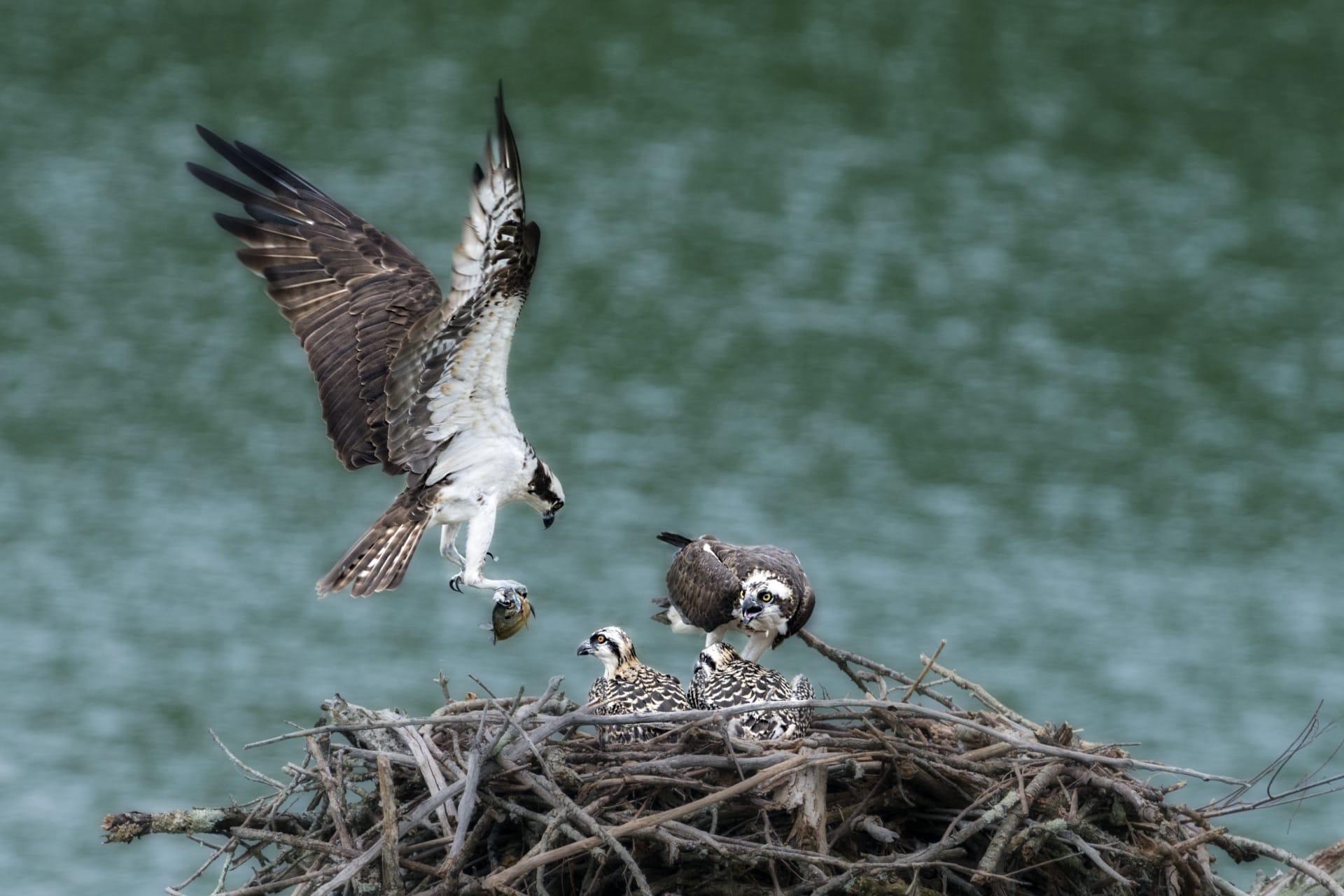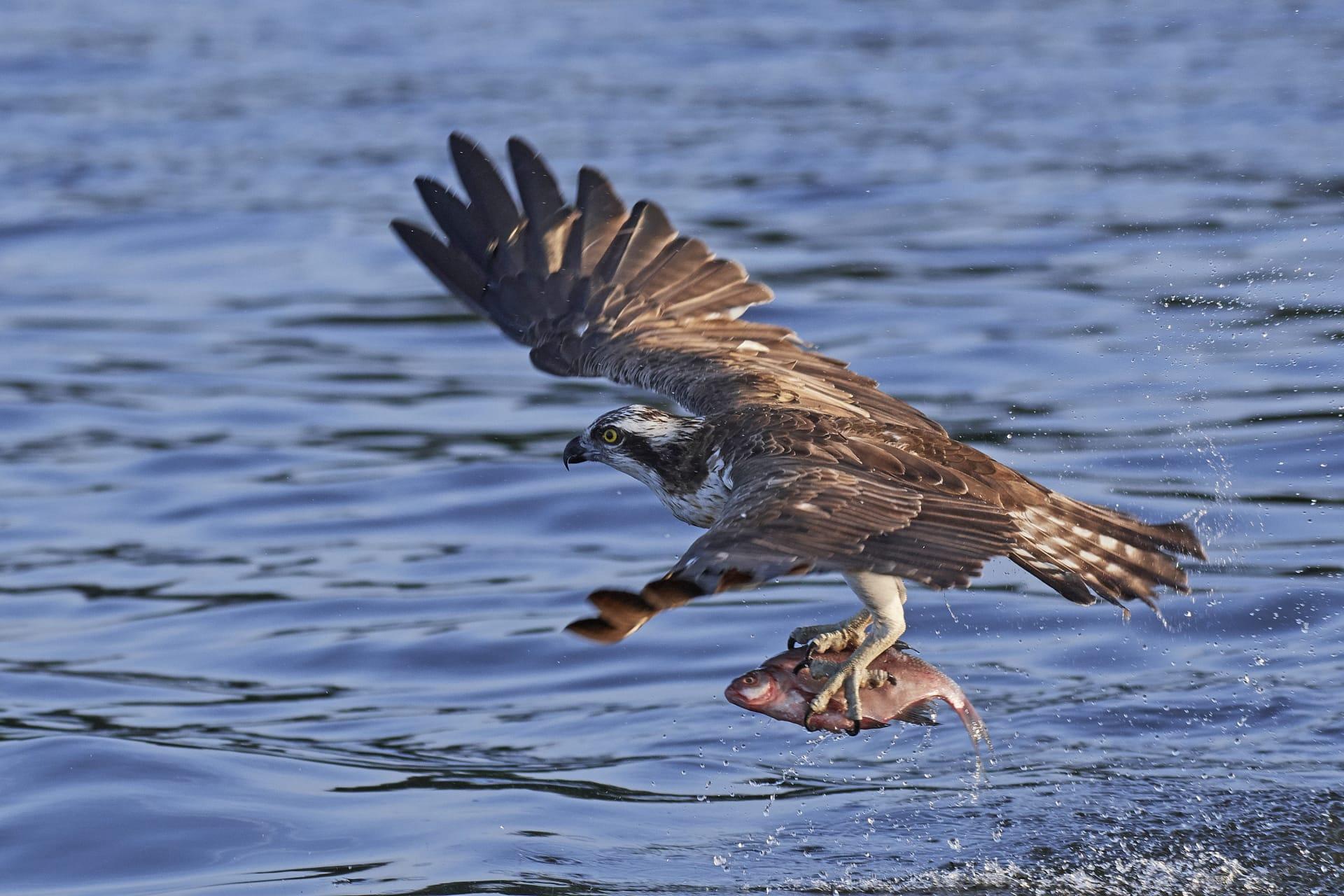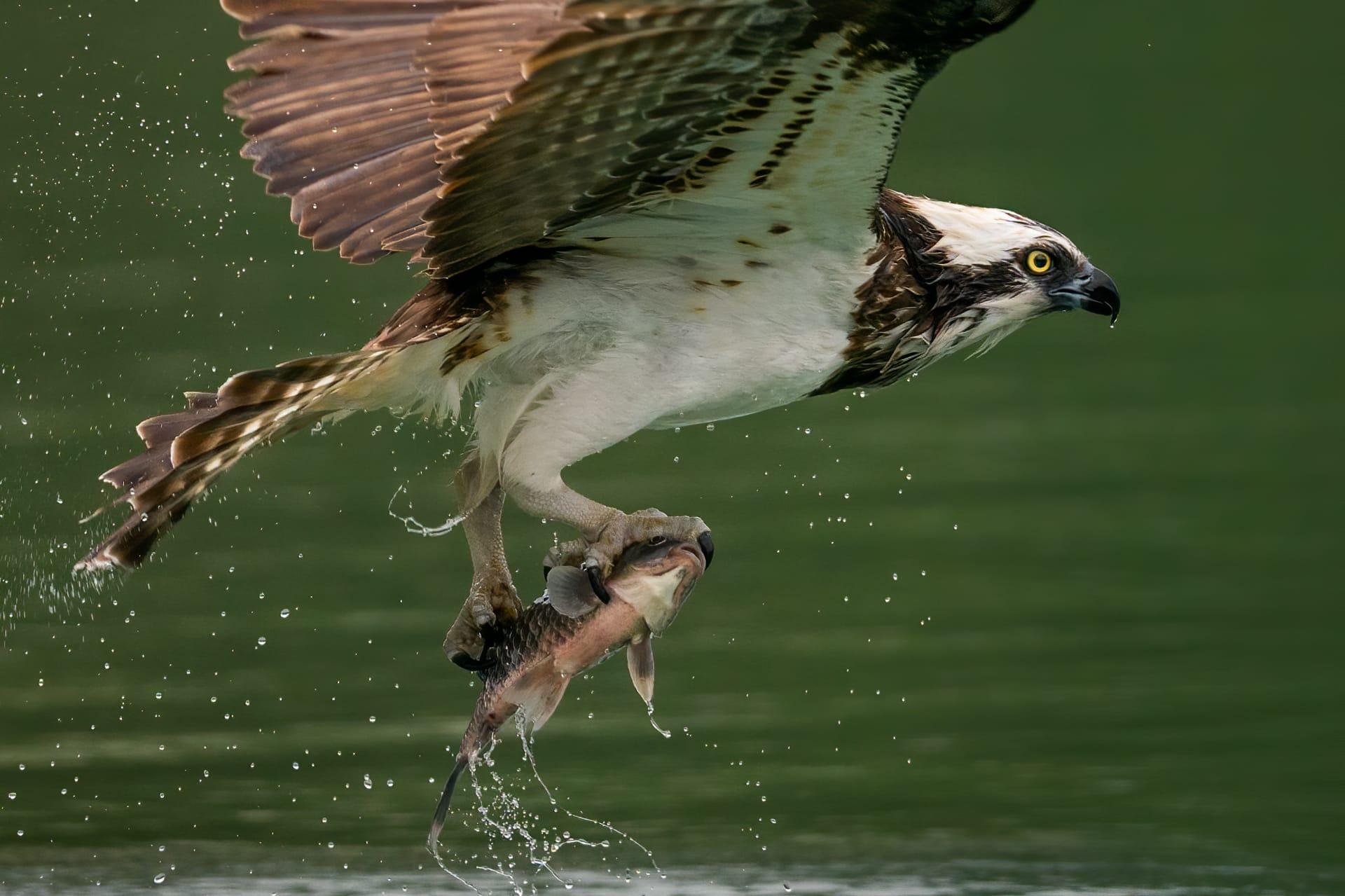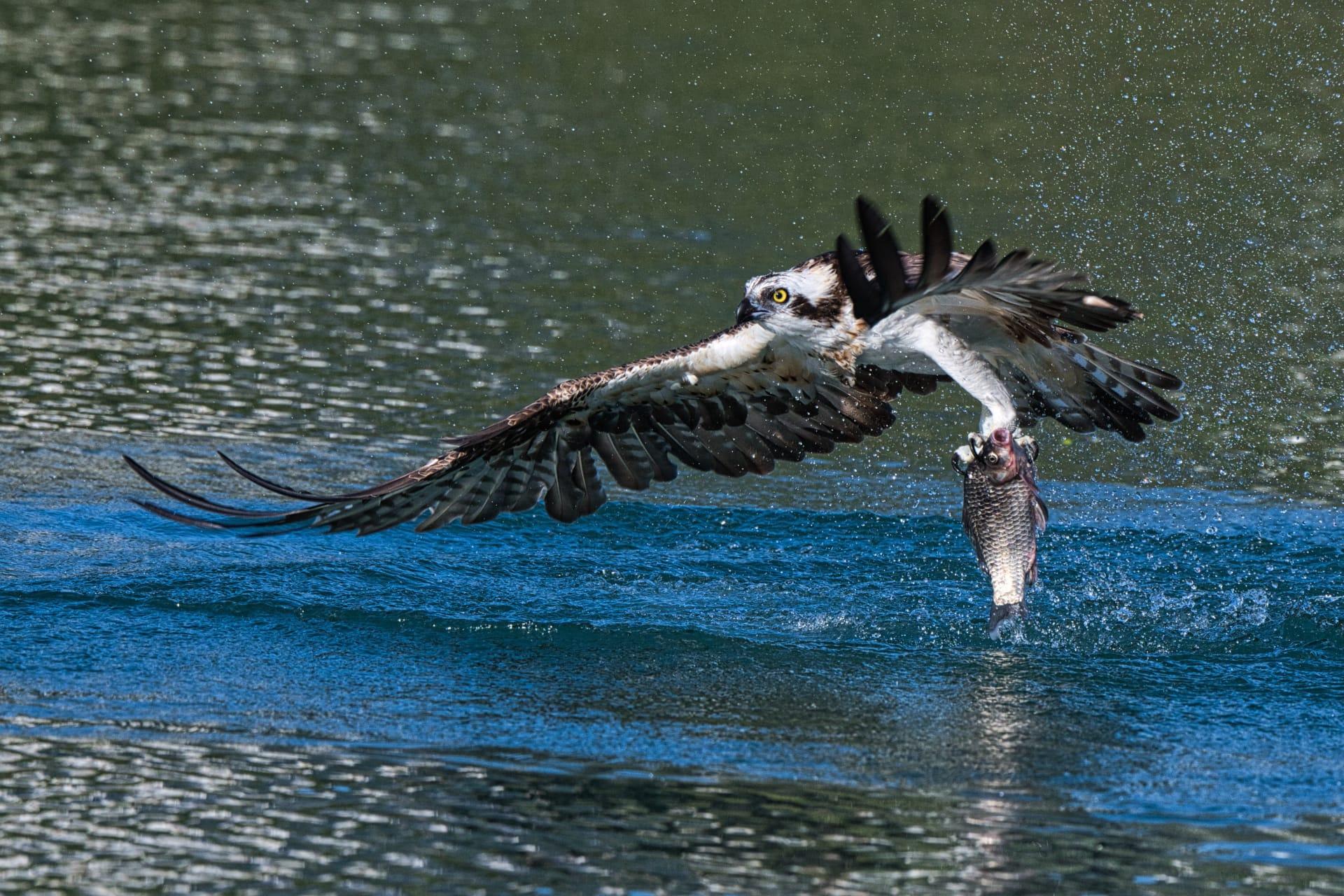Osprey Trivia
- Home /
- Trivia Question /
- Animal /
- Osprey Trivia
1
Question: What distinguishes the Osprey's diet from other birds of prey?
Answer: Unlike many raptors that have a varied diet, Ospreys are almost exclusively fish eaters, showcasing a remarkable specialization. They possess unique reversible outer toes and spiny footpads called spicules, which enable them to grasp their slippery prey with extraordinary precision. Their diet mainly consists of medium-sized fish, averaging around 9.8 inches in length, which they catch by diving feet first into water.
Question: How high can Ospreys fly to spot their fish prey?
Answer: Ospreys are known for their incredible eyesight, essential for spotting fish from great heights. They typically hunt by soaring at an altitude of 30 to 100 feet above water. Their acute vision enables them to see underwater objects from above, compensating for the refraction of light in water. This aerial advantage allows them to plunge down with great accuracy to catch fish.

2
Question: Do Ospreys migrate as a flock?
Answer: Contrary to popular belief, Ospreys do not migrate in large flocks like some other bird species. They are largely solitary migrants, traveling alone or in small, loosely assembled groups. During migration, they can cover up to 260 miles per day, relying on thermals and updrafts to aid their long journey.
Question: Are Ospreys monogamous and do they mate for life?
Answer: It's a common misconception that all birds of prey are strictly monogamous. While Ospreys often form long-term pair bonds, they are not necessarily lifelong. Their monogamy is more about convenience and territoriality. If one mate does not return to the breeding grounds, the other will readily accept a new partner.

3
Question: How do Ospreys communicate with each other?
Answer: Ospreys have a fascinating range of vocalizations used for communication, particularly during the breeding season. Their calls include a series of sharp, whistling or chirping sounds. Males often use a high-pitched, rhythmic chirping to attract females. They also have alarm calls and calls used for coordinating efforts while defending their nests from predators.
Question: What is the average lifespan of an Osprey in the wild?
Answer: Ospreys have a relatively long lifespan for birds. In the wild, they can live up to 15-20 years, with the oldest known Osprey reaching around 25 years. However, their early life is fraught with challenges, and the mortality rate is high in the first year. Once they survive past this critical period, their chances of reaching a ripe old age increase significantly.

4
Question: What adaptations do Ospreys have for fishing?
Answer: Ospreys are superbly adapted for their piscivorous lifestyle. They have closable nostrils to keep out water during dives, and their toes are of equal length, allowing them to grasp slippery fish with a powerful grip. Their talons are extremely sharp and curved, perfect for piercing and holding onto their aquatic prey. Even their plumage is adapted for fishing, with dense, oily feathers that shed water easily.
Question: How far can Ospreys travel during migration?
Answer: Ospreys undertake remarkable migrations, some traveling over 3,000 miles each way between their breeding and wintering grounds. They are known to fly from North America to South America, crossing vast expanses of ocean and land. Remarkably, juvenile Ospreys make this journey alone, navigating without guidance from their parents, relying on their innate sense of direction.

5
Question: Can Ospreys swim?
Answer: While Ospreys are not designed for swimming, they can end up in water if a catch is too heavy or a dive is too deep. In such cases, they have the ability to take off again from the water surface, although it can be challenging, especially with a heavy fish. Their water-resistant feathers and powerful wing strokes aid them in getting airborne again.
Question: How do Ospreys build their nests and where?
Answer: Ospreys are masterful nest builders, selecting sites that provide safety and proximity to fishing grounds. They often build their large nests atop tall structures like trees, cliffs, and even man-made structures like telephone poles and specially designed nesting platforms. Both male and female Ospreys collaborate in building the nest, which they line with grass, bark, and other soft materials. These nests can be reused and added to for many years, becoming quite massive over time.